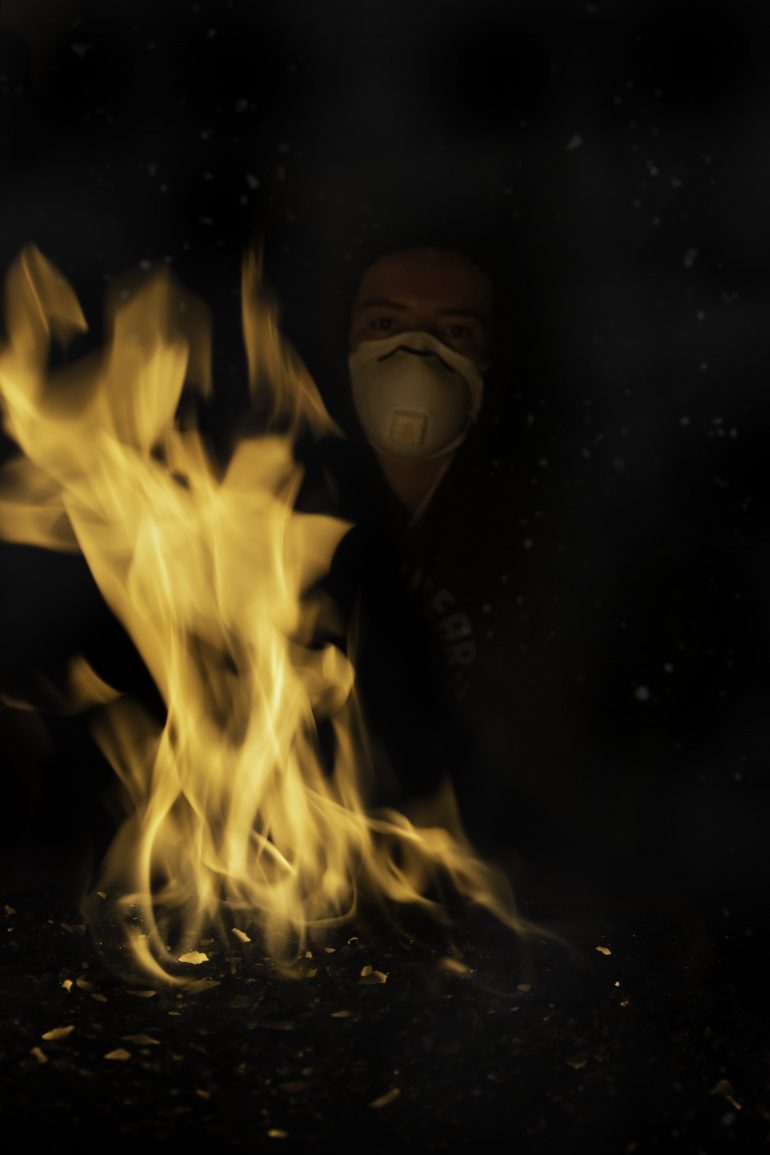Many of us may remember the feeling of rising apprehension each October as year after year, weather broadcasts relay reports of wildfires devastating our western coastline. Stepping outside and expecting to see the grey of overcast autumn skies and instead watching ashes rain down from above is truly jarring–the perpetually orange haze painting a dystopian portrait of the California we know and love. Even prior to the COVID-19 pandemic, residents of Northern California were masking up with N95 respirator masks–not because of any viral threat, but because of the risk of smoke inhalation and the dangers that come with it.
To fully understand the hazardous impact of wildfire smoke on the human respiratory tract, it is essential to dissect the smoke’s molecular makeup. Fine particulate matter equal to or less than 2.5 micromolar in diameter (PM2.5) are heavily implicated in adverse lung health. These aerosols are incredibly small in size, measuring up to at least 20 times smaller than the width of a human hair. Particulate matter has the ability to breach the filtration provided by nose hairs, allowing access to the respiratory tract. Its large surface-area-to-volume ratio allows more and more PM2.5 to touch the lung epithelia–the barrier between inhaled air and the blood stream. As described by Yu-Fei Xing of Soochow University, such contact permits these particles to diffuse into other parts of the body during gas exchange, a normal event in respiration allowing oxygen and carbon dioxide to circulate between the alveoli and capillaries.
According to a Scientific Reports study, PM2.5 can present itself in diverse sizes, shapes, chemical compositions, and toxicities. For example, the materials burned in wildfires carry a greater proportion of polar organic compounds–high in carbon–including wood, plants, and plastic. In fact, recent animal toxicological studies published in Nature Communications have established that PM2.5 generated by wildfire smoke contains more carbon than other sources such as road dust, sea spray aerosols, and ammonium nitrate. Sathrugnan Karthikeyan of the National University of Singapore describes how this carbonaceous combustion generates reactive oxidative species (ROS), which are oxygen-containing molecules that are highly unstable and readily react with other molecules. In particular, free radical ROS–molecules with unpaired electrons–can cause significant tissue damage as a result of oxidative stress, wherein large-scale chemical chain reactions throughout the body occur. This poses severe consequences for human health and homeostatic balance, including cardiovascular disease, neurodegenerative impairment, and cancer.
PM2.5 produced by wildfire smoke contains molecules with high oxidative potential, and when inhaled, forces a homeostatic imbalance of calcium that results in excessive inflammation and tissue injury. ROS causes massive cell oxidation and inserts holes in the lipids that comprise cellular membranes. This increases the ability of molecules–including calcium–to enter and exit the cells. According to a study published in the American Journal of Physiology, high calcium homeostatic imbalance also can induce cell death. This is because as a key factor in inflammation, calcium plays an integral role in the mediation of cellular function. When cell membranes become porous as in the case of oxidative stress, more calcium enters the cell. This, in turn, activates a positive feedback loop that generates even more ROS free radicals. Macrophages, which digest and destroy foreign particles, are particularly reliant upon calcium regulation. Thus, as described by Siamon Gordon of the University of Oxford, these over-activated macrophages go on to trigger inflammatory injuries in the lungs and other organs.
With the progression of climate change and rising global temperatures, the risk of lung cancers and other respiratory health conditions is also growing. In particular, the United States EPA warns of the positive correlation between PM2.5 inhalation and the incidence or exacerbation of respiratory conditions such as asthma, chronic obstructive pulmonary disease, pneumonia, and lung cancer. Researchers around the world have been developing filters that mitigate the risk of inhaling small particles, an endeavor accelerated by the COVID-19 pandemic as described in a review published in Science Partner Journal. These new mask technologies include electrospun nanofibers, metal-organic frameworks, and of course, N95 respirator masks.
Though the dangers of airborne microbial infection highlight the importance of protective masks, they should not be the only reason we resort to using them. As infectious diseases continue to threaten humanity, so will wildfires. It is important to note that while the COVID-19 pandemic might be an isolated event, global temperatures will continue to rise. Smoke inhalation presents a major concern to public health. One of the most practical ways to protect ourselves from these wildfires is assuming similar masking practices as the ones we’ve adopted in the past year.
References:
- https://jtd.amegroups.com/article/view/6353/6196
- https://www.nature.com/articles/s41598-018-35398-0
- https://www.nature.com/articles/s41467-021-21708-0
- https://www.tandfonline.com/doi/abs/10.1080/15287390600751264
- https://www.sciencedirect.com/science/article/pii/S0041008X97982521?via%3Dihub
- https://journals.physiology.org/doi/full/10.1152/ajplung.00139.2003
- https://pubmed.ncbi.nlm.nih.gov/12511873/#affiliation-1
- https://www.epa.gov/pm-pollution/how-smoke-fires-can-affect-your-health
- https://www.ncbi.nlm.nih.gov/pmc/articles/PMC7429109/
- https://pubs.acs.org/doi/10.1021/acsami.8b16564

